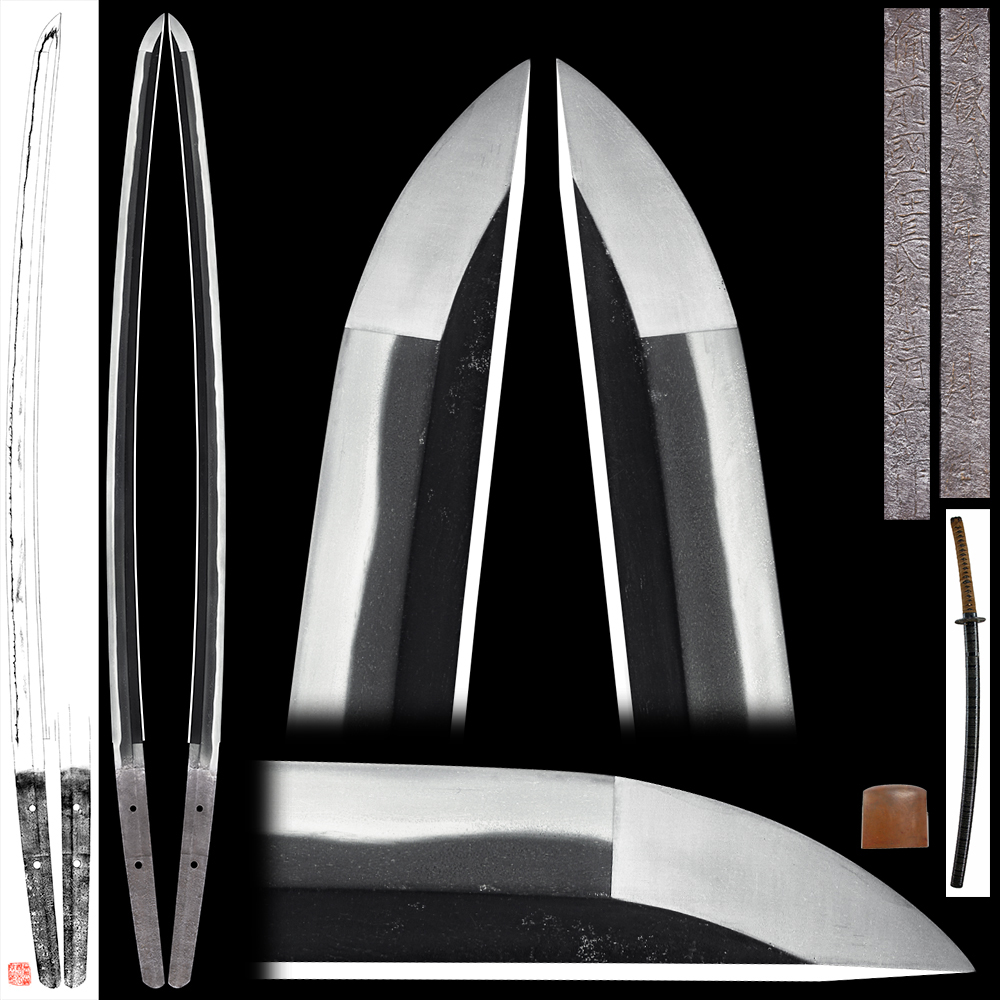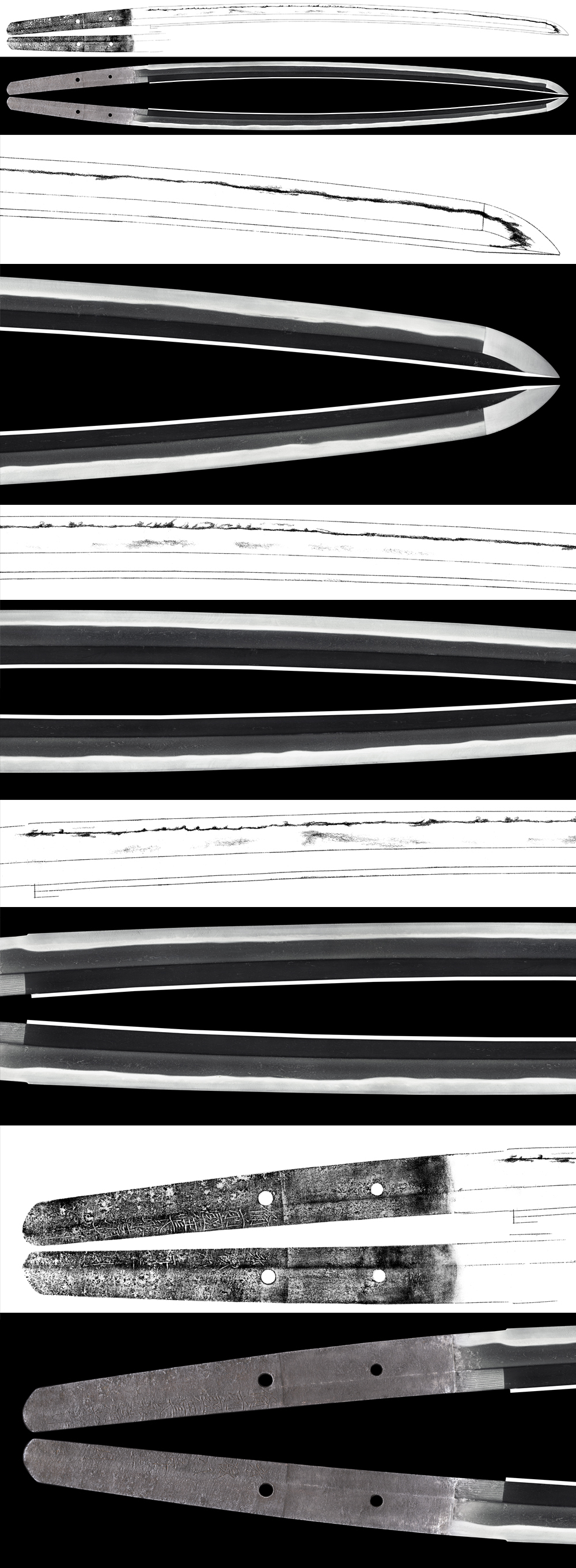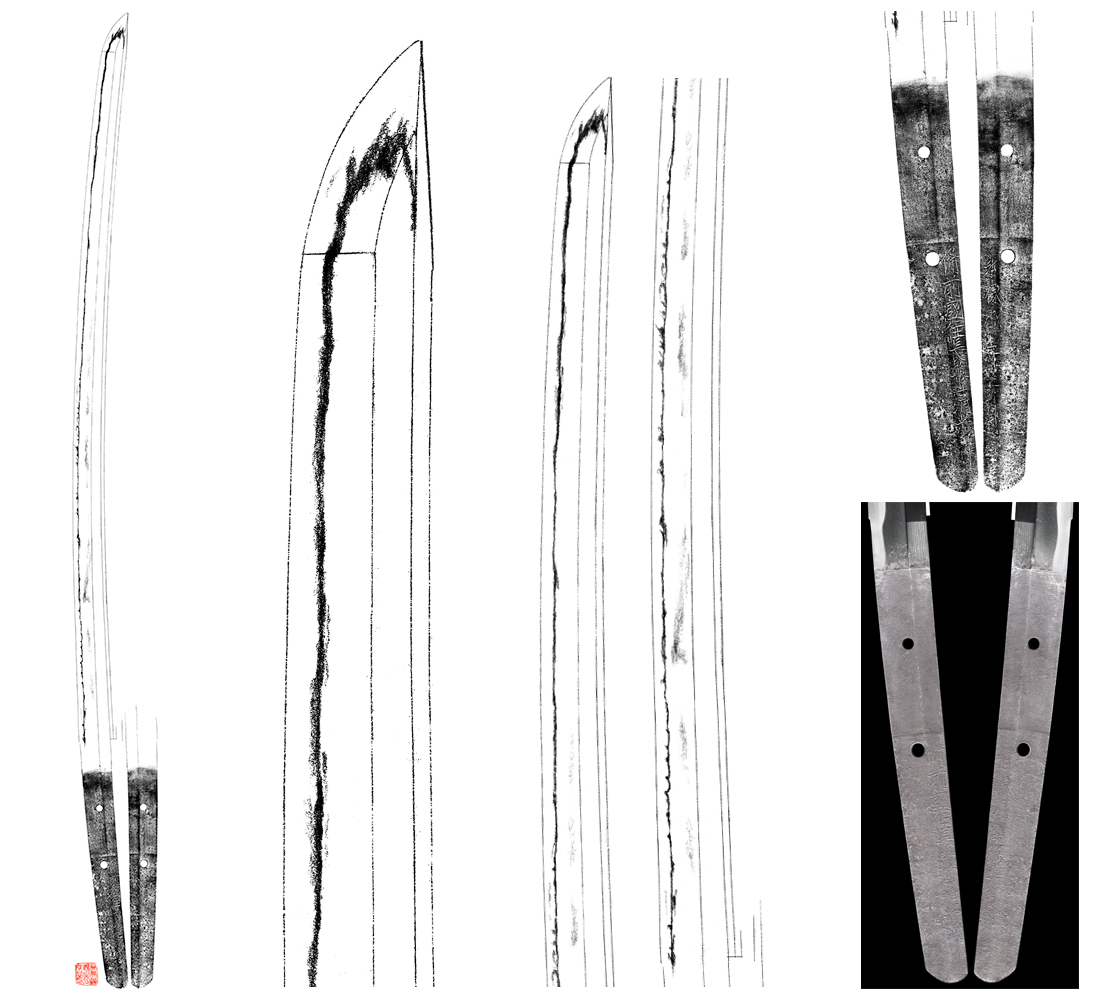Katana : Bisyu Kuni Jyu Osafune Kiyomitsu Saku/Eiroku 8 nen 2 Gatsu Hi
2017/01/07
Katana in Koshirae Guarantee NBTHK Hozon Token(if the blade doesn't pass
we will buy back 100% of the sales price)
Signature : Bisyu Kuni Jyu Osafune Kiyomitsu Saku.
Eiroku 8 nen 2 Gatsu Hi (1556 Feb)
(We divide 4 sections for each sword as Saijyo saku, Jyojyo saku
Jyo saku and regular saki)This sword belongs to jyosaku
ranking.
Sue koto : Cyujyo saku ranking : Bizen province.
The blade was polished.
Habaki : Copper single habaki.
Blade length : 68.4 cm or 26.92 inches.
Sori : 1.7 cm or 0.6 inches.
Mekugi : 2
Width at the hamachi : 3.01 cm or 1.19 inches.
Width at the Kissaki : 2.06 cm or 0.81 inches.
Kasane : 0.69 cm or 0.27 inches.
Era : Late Muromachi period. 1566.
Shape : The sword is small Machiokuri (about 7cm) with deep sori and longer kissaki nice looking shape.
Jitetsu : Itame hada and mokume hada mixed with Jinie attach and Utsuri appear.
Hamon : Konie deck suguha with kasha and yo work.
Boshi is hakikake style.
Special feature : Harima, Mimasaka and Bizen province had been
prospered under the protection of the Akamatsu family.
Above all, Bizen province has turned out a great many talented
swordsmiths.
A large number of swords were made there in the late Muromachi period not only supplying the demand of the Age of
Provincial Wars in Japan but also as an important exporting item to the Ming dynasty in China.
It is said that the founder of Osafune School was Mitsutada in mid 13th century.
Kiyomitsu was one of Osafune swordsmith.
The name had been succeeded for generations.
Above all, Gorozaemon (No) Jo Kiyomitsu circa Tenmon era and Magoemon (No)
Jo Kiyomitsu are famous among them.
This piece could be categorized a regular class sword.
It is well made and the condition is not bad.
The condition explains well that, despite the age, this katana has been cherished and preserved well.
We recommend this katana.
At Edo period, very famous samurai Katsura Kogoro loved Kiyomitsu a lot.
Koshirae :
Tsuba : On the round shape iron Tsuba, brass is inlayed which is called Heianjyo : Early Edo period.
Saya : Kawarinuri saya.
Huchikashira : Iron plate.
Menuki : A shish dog is engraved by syakudo palte.
Tsuka ito : leather brown color.
Guarantee : NBTHK Hozon Token
If the blade doesn't pass, we will buy back 100% of the sales price.
Aoi Art estimation paper : whole Oshigata.







